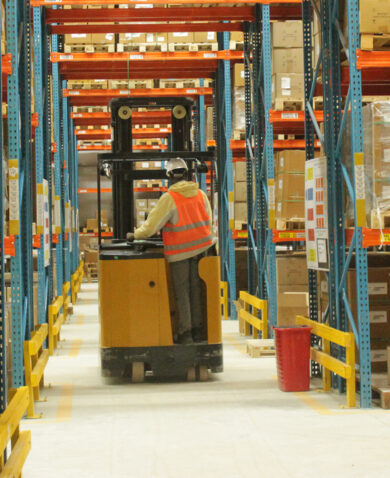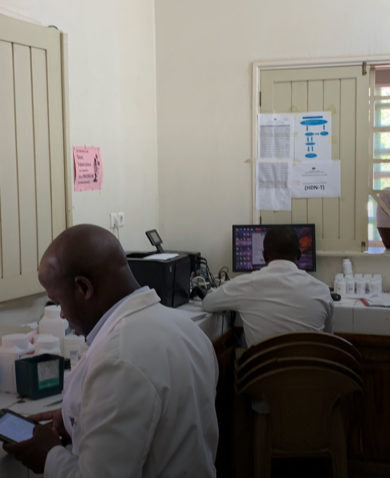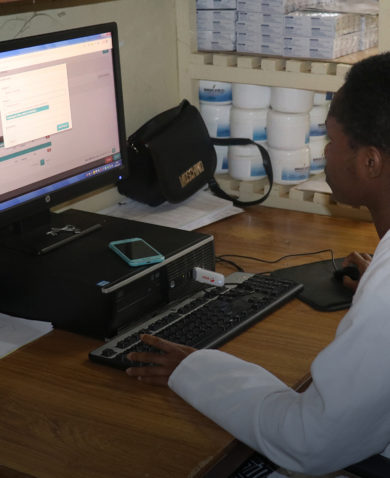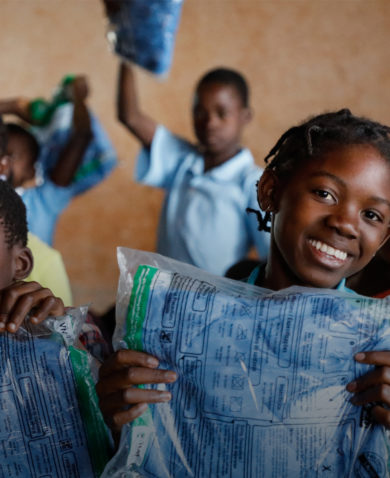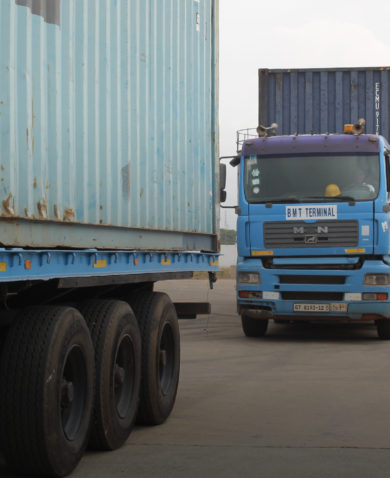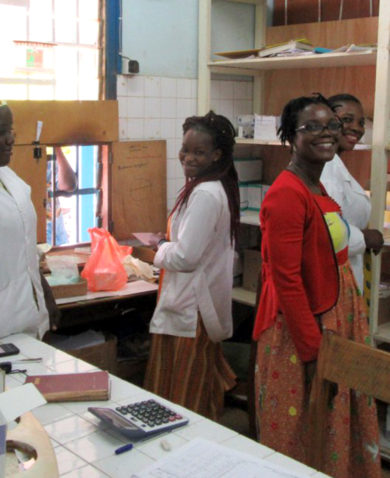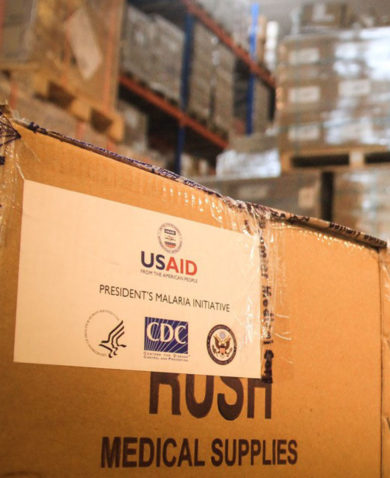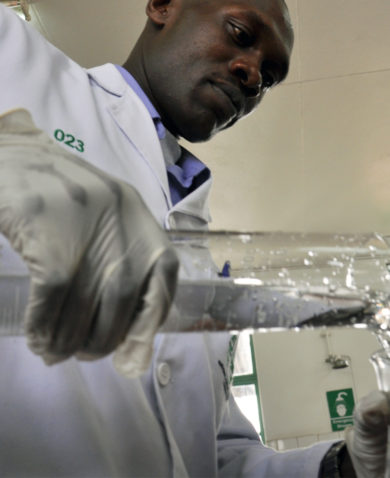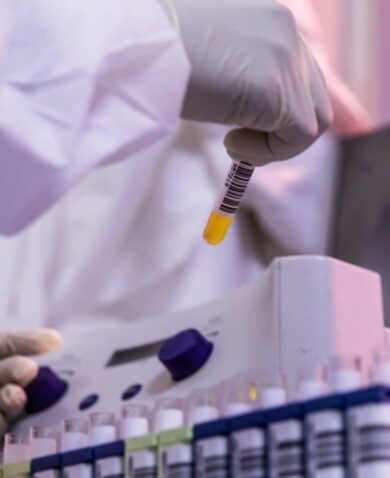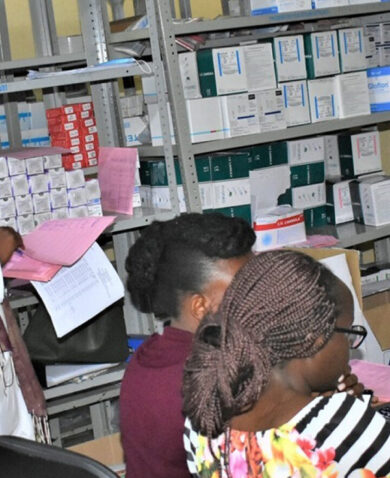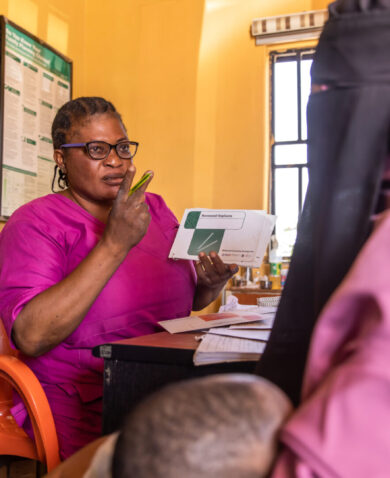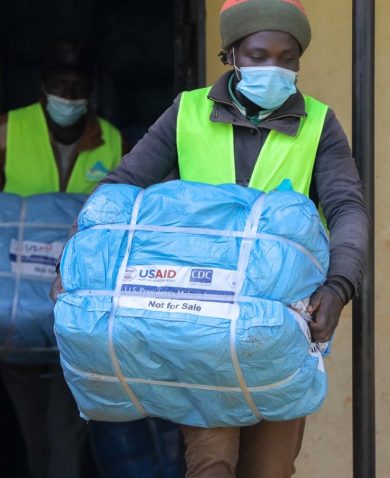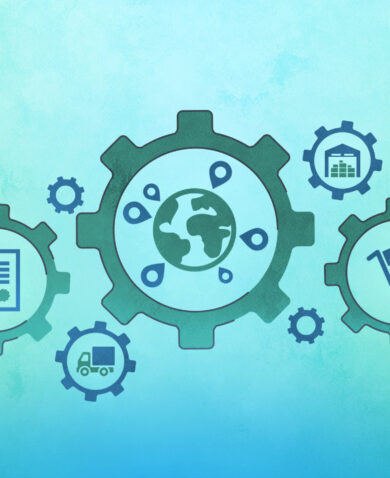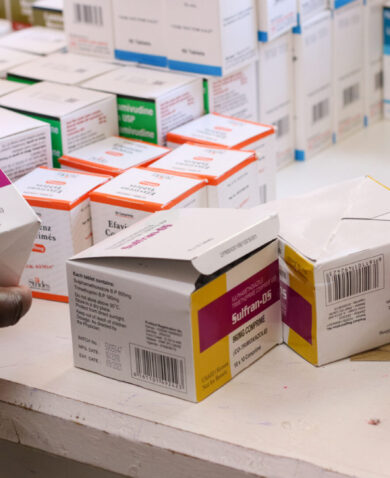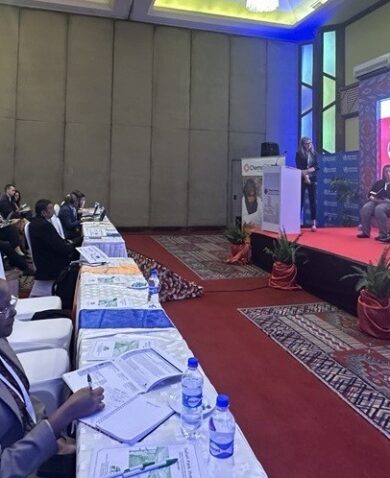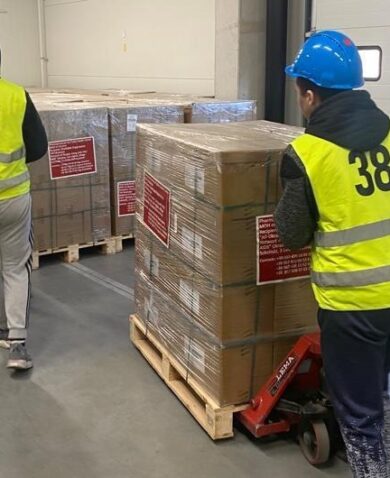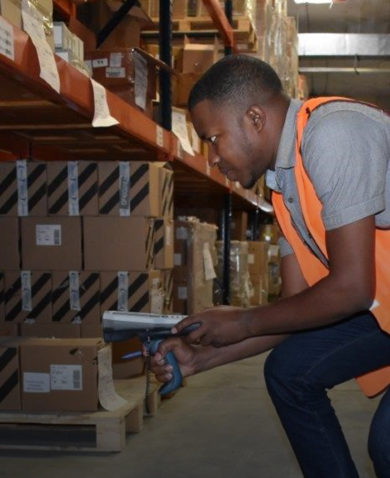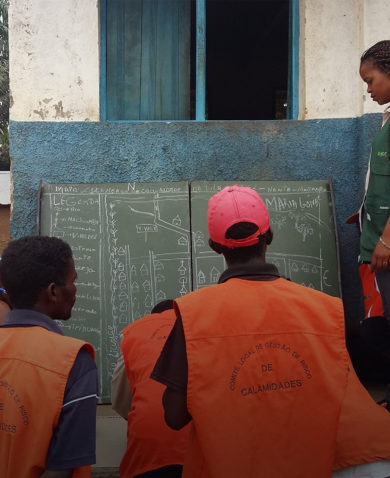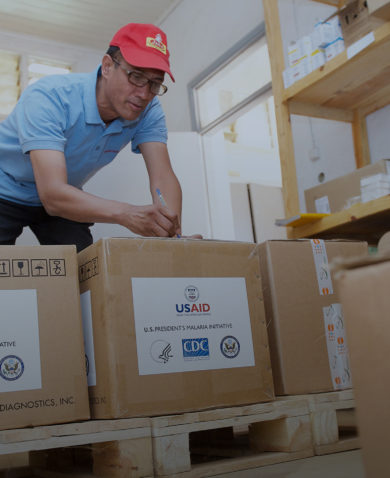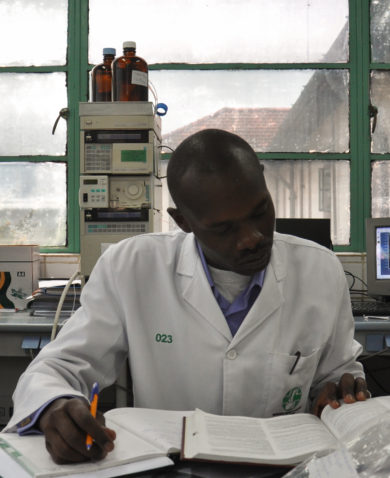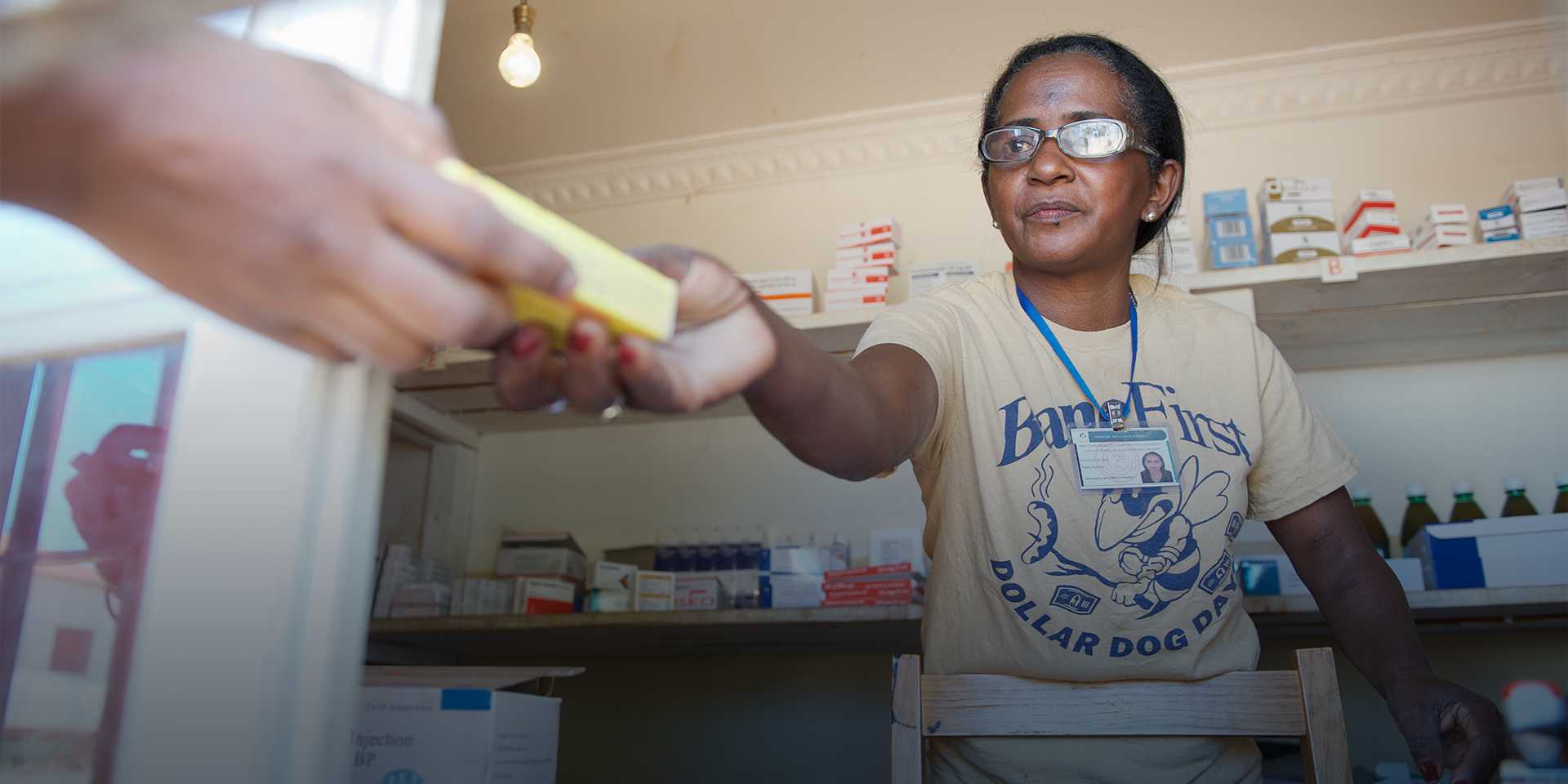
Chemonics’ Five Technical Priorities to Drive Health Supply Chain Efficiency in 2023
February 23, 2023 | 4 Minute ReadIn planning for our 2023 supply chain learning strategy, we have identified five common technical priorities that are shaping most of our health supply chain work.
As the world continues to recover from the COVID-19 pandemic and the resulting supply chain disruptions, Chemonics is even more determined to build agile, sustainable, and self-reliant health supply chains in partnership with in-country and global stakeholders across sectors. The past couple of years have been eventful and unpredictable for global supply chain actors, and the resulting disruptions and economic uncertainty highlight existing challenges in global health supply chains. At the same time, necessity catalyzed the design, pilot, and scale up of innovative solutions.
In planning for our 2023 supply chain learning strategy, Chemonics reflected on how health supply chain management in low- and middle-income countries (LMICs) has evolved, and the opportunities to contribute to the advancement of the industry at large. We analyzed our supply chain technical work in more than 60 countries, reflected on the insights raised at supply chain events, and consulted with fellow experts throughout the industry. While countries have varying levels of health supply chain maturity, hence different needs, we have identified five common technical priorities that are shaping most of our health supply chain work.
1. Data-driven supply chains
Surprised by this technical priority? You shouldn’t be. Data-driven supply chains are key to providing visibility to manage and de-risk our global and in-country supply chain operations. Simply said, data allows us to understand consumption needs and plan for the procurement and distribution of those commodities in an efficient way. To collect quality data for future analysis and decision–making is not as straight-forward. Health supply chains in sub-Saharan Africa are going through their own digital transformation journey. Some countries, such as Malawi and Rwanda, are establishing National Products Catalogs and strengthening their logistics management information systems (LMIS), while others are looking into establishing a foundation for global supply chain standards (namely, GS1) and pushing for interoperability of their health information systems. Some countries that are more mature in their data evolution are conducting predictive analytics and scenario planning to increase agility, foresee supply chain needs, and prevent disruptions. For example, in Zambia, the Chemonics-led USAID Global Health Supply Chain Program-Procurement and Supply Management (GHSC-PSM) project designed and implemented the Stock Redistribution Tool to identify facilities with excess stock of anti-malarial medicines and carry out redistribution to stocked-out and understocked facilities. We work alongside local stakeholders to achieve their next data visibility goal.
2. Country-led supply chain services to ensure sustainable and stronger health systems
USAID’s recent Localization Policy and Local Capacity Strengthening Policy emphasize the role of local actors in leading their own development. Working with local health actors around the world, Chemonics embraces a systems-thinking approach to strengthen capacity and help identify the root causes of technical, operational, political, or behavior change challenges and co-designs solutions appropriate to the local context to achieve self-reliance. In Rwanda, GHSC-PSM provided continual technical assistance to the regional medical store (RMS) to support its transition to a fully functioning parastatal organization capable of managing donor commodities and improving operational supply chain efficiency. This included supporting the RMS to enhance contract management and performance monitoring, supplier relationship management, and data-driven analysis to guide procurement decisions. As a result of this support, in 2021, the RMS became a direct recipient of USAID funding and met its goal to transition 50% of USAID-managed HIV/AIDS commodity procurement to RMS.
3. Ministries of health as stewards of the supply chain and the private sector as its strategic partner
In the past few years, the international donor community has doubled down on the idea of the government as steward of the health supply chain and the private sector as an important advisor, executor, innovator, and financier to achieve sustainable health outcomes in LMICs. In 2021, USAID launched its Private Sector Engagement (PSE) Policy and published PSE Modernized, which introduces specific internal USAID reforms to enable PSE policy implementation. Our experience shows that no single PSE approach fits every operating context or each health supply chain’s needs and capacities. For the stewardship model to thrive, the public and private sectors must not only build a strong relationship based on trust, but also learn to leverage their respective comparative advantages.
4. Produce and position health commodities closer to the patient and end-user
The COVID-19 pandemic further laid bare challenges to ensure timely access to quality and affordable health commodities. Foreseeing constraints in stock availability and logistics disruptions in sub-Saharan Africa, GHSC-PSM submitted early commodity orders and pushed early distribution in higher quantities to the last mile. This strategy resulted in an average of 90 percent on-time delivery during the pandemic’s first year (March 2020 to March 2021). Thinking long-term, to ensure global health security, African leaders and the international community agree on the importance of increasing Africa’s self-reliance by preparing for future emergencies and accelerating regional manufacturing of health commodities. In a December 2022, the U.S. Government launched the U.S.-Africa Partnership in Health Cooperation which includes ambitious targets for PEPFAR and PMI in support of these goals. Also, Gavi and partners, in response to a call from the African Union and G7 Development Ministers, published priorities for support to expand sustainable vaccines manufacturing in Africa. As an organization with 13 technical practices, Chemonics understands the multi-dimensional approach needed to achieve these goals that go beyond the realm of supply chain management.
5. Invest in innovative and scalable solutions
The complex operating environments where we work require innovative and impactful solutions to reach the unreachable. Through our health supply chain work and strategic initiatives, we design, test, and scale solutions specifically tailored to de-risk the supply chain, increase efficiencies, and ensure uninterrupted access to commodities to the people who need them most. For example, we are strengthening differentiation of care through person-centered models, which include identifying more convenient pick-up locations and optimizing frequency of visits. In Mozambique, GHSC-PSM, in collaboration with EPIC, FGHN, and other implementing partners, worked with private pharmacies to distribute antiretrovirals to increase convenience and hence adherence to treatment for patients living with HIV. After a successful pilot in seven pharmacies in 2021, this approach was quickly scaled up to more than 74 pharmacies across the country by July 2022. We are also continuously reimagining how to leverage youth and community health workers to reach the last mile, and exploring how to use greener packaging to reduce environmental impact.
Chemonics will continuously work alongside in-country and global stakeholders to tackle these and other technical priorities to build sustainable, resilient, and self-reliant health supply chains for better health outcomes for all.
Photo: Mada, a pharmacist in Madagascar, hands over a box of medicines to a patient. Credit: Lan Andrian for GHSC-PSM (2017)
Posts on the blog represent the views of the authors and do not necessarily represent the views of Chemonics.



